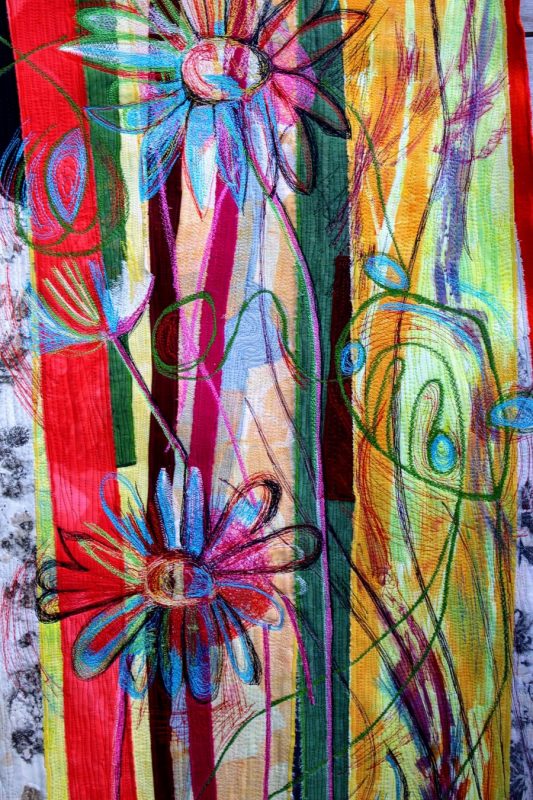
Thank you to Amanda Duke for an interesting and entertaining talk at our January meeting. Amanda was an art teacher for many years and was head of art at Steyning Grammar School. The focus of her talk was debunking the claim by George Bernard Shaw that ‘Those who can, do; those who can’t, teach’. During her talk, Amanda spoke about the transition from teacher to full-time artist, and the process of building confidence in both. Amanda spoke about how fortunate she felt to have good art teaching herself as a student, and how passionate she feels about passing this on. There are quite a few teachers in our group, so there were many nodding heads as Amanda talked.
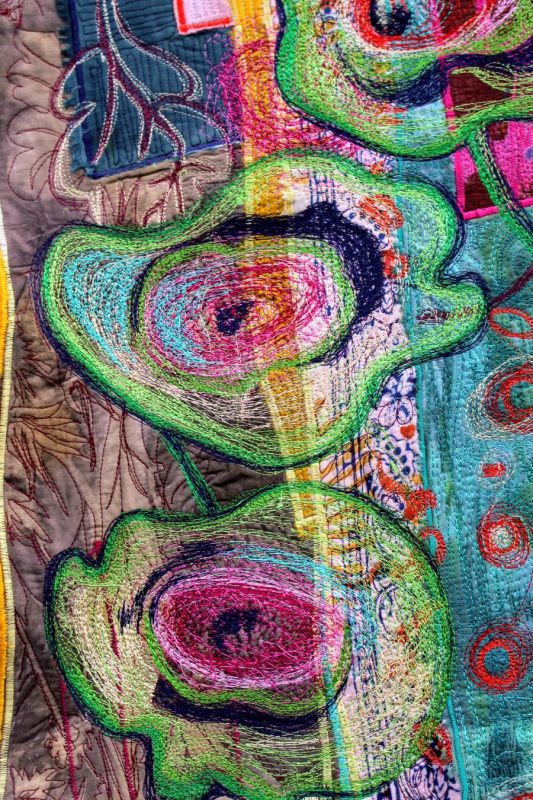
Amanda talked us through her lifetime of ‘Art Doing’ and ‘Art Teaching’. Starting with a fine art training, becoming a teacher for 36 years including being head of art; and only fairly recently (the last few years) becoming a full-time artist. Her practice has mainly been in fine art and collage, and it is mainly the last five years or so that she has become a textile artist. It was surprising (and strangely reassuring) to hear Amanda talk about Imposter Syndrome as an artist in her own right. This isn’t something that you expect to hear from someone who is art college trained, taught art for 36 years, produces such amazing work, has won a prize at the Festival of Quilts, been an exhibitor with different prestigious exhibiting groups, set up and run two large exhibitions at the FOG and other achievements. If someone feels this despite having such clearly established professional art credentials, then there is hope for the rest of us! In fact that was one of the main themes of Amanda’s talk – how to find the courage to just get on and do it, take a risk, and ‘put yourself out there’.
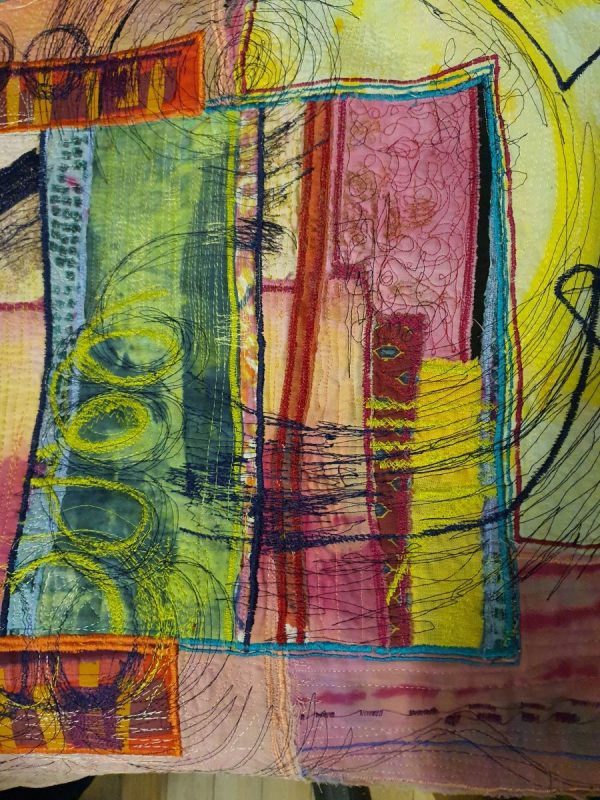 Stitched textiles are a relatively new departure for Amanda, whose main interests until a few years ago had been in fine art, and paper collage. An interest in stitch and quilting began to develop when she facilitated the Steyning Grammar School Heritage Quilts. This was a project that was supported by a Heritage Lottery grant, and was a community project that brought in 500 local people of all ages. It led to setting up the ‘Steyning So and Sews’, when the group had enjoyed themselves so much that they didn’t want to stop when the project was completed.
Stitched textiles are a relatively new departure for Amanda, whose main interests until a few years ago had been in fine art, and paper collage. An interest in stitch and quilting began to develop when she facilitated the Steyning Grammar School Heritage Quilts. This was a project that was supported by a Heritage Lottery grant, and was a community project that brought in 500 local people of all ages. It led to setting up the ‘Steyning So and Sews’, when the group had enjoyed themselves so much that they didn’t want to stop when the project was completed.
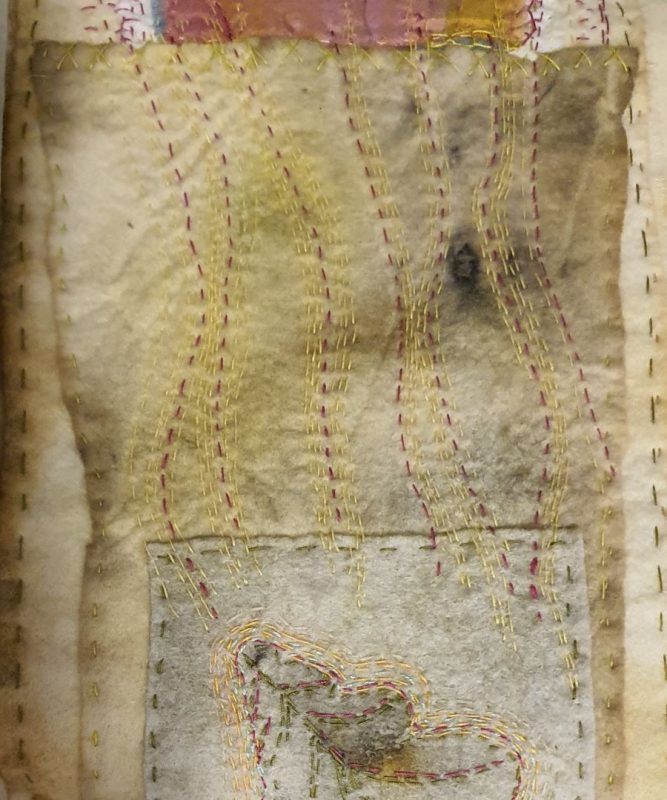 In 2014 Amanda went part-time at school and started teaching adults too. Over the last four or five years, Amanda has been increasingly drawn to fabric and stitch. Like many SCS members she did a course with Wendy Dolan, which gave her the skills to machine-embroider over her fabric collages. Being Artist in Residence at Sussex Prairie Gardens in 2017 encouraged her to think big, and she was inspired by the flowers and leaves, as well as the experience of ‘meandering’ through the paths and flower-beds. She developed techniques and skills in plant-rubbings and eco-print, which she incorporated into the exhibition.
In 2014 Amanda went part-time at school and started teaching adults too. Over the last four or five years, Amanda has been increasingly drawn to fabric and stitch. Like many SCS members she did a course with Wendy Dolan, which gave her the skills to machine-embroider over her fabric collages. Being Artist in Residence at Sussex Prairie Gardens in 2017 encouraged her to think big, and she was inspired by the flowers and leaves, as well as the experience of ‘meandering’ through the paths and flower-beds. She developed techniques and skills in plant-rubbings and eco-print, which she incorporated into the exhibition.
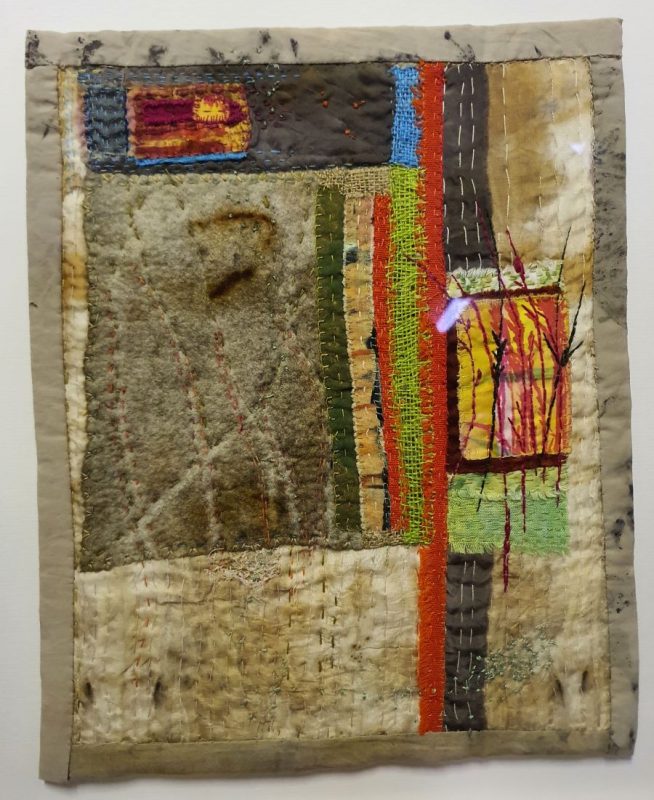 Being the artist-leader on a Colouricious holiday to India threw Amanda into a full sensory experience, and in response her work moved away from the more subtle browns and greens and became a riot of colour. She moved to using Procion-dyed fabrics rather than natural-dyes, and enjoyed the vibrant colours that these produce.
Being the artist-leader on a Colouricious holiday to India threw Amanda into a full sensory experience, and in response her work moved away from the more subtle browns and greens and became a riot of colour. She moved to using Procion-dyed fabrics rather than natural-dyes, and enjoyed the vibrant colours that these produce.
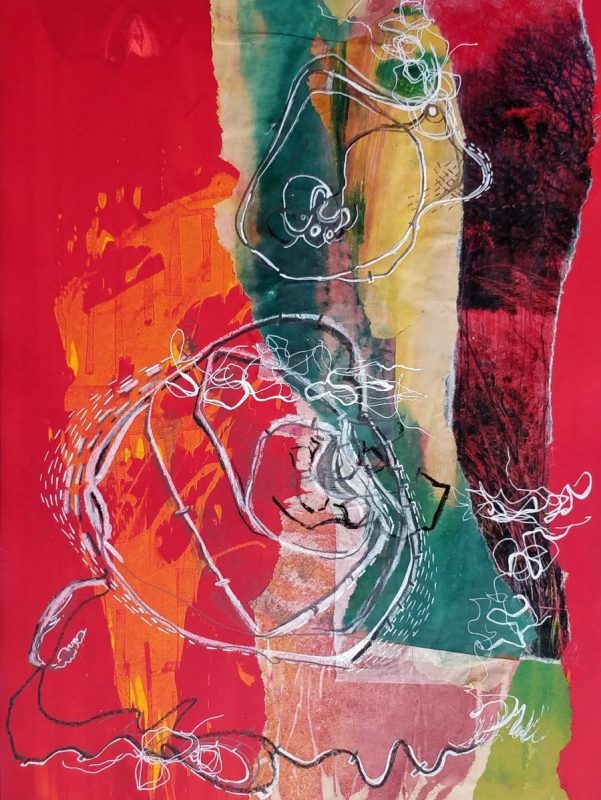
Amanda joined Leslie Morgan at the Committed to Cloth studio, and felt she had found ‘her tribe’. She enjoyed the sense of purpose, productivity and play, which in turn she passes on to her own students. Unfortunately this was around the time of Covid lockdowns, so Amanda was then suddenly working on her own in her garden studio, and having to think about what direction she wanted to go in. Over time she began to draw together her two quite different styles of work – the natural dye processes and the Procion dye processes. Spending lockdown time in her garden led to realising that the reason the flower colours ‘pop’ and look so bright is that they are offset by the more neutral colours of leaves and earth. This led her to combine the two styles together.
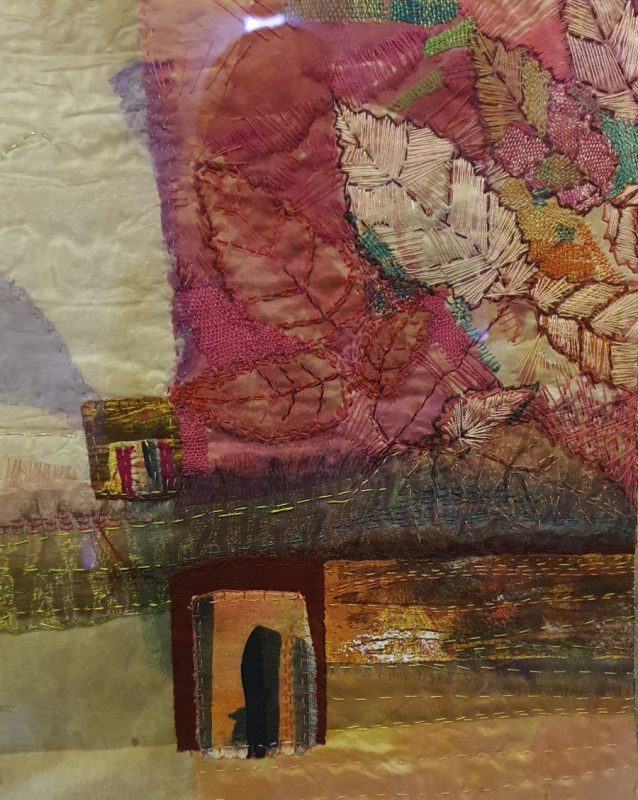 Having been invited to exhibit at the Festival of Quilts, Amanda found herself taking responsibility for the gallery since the founder of the group was unwell. This was a very big learning curve. At the same FOQ she also entered one of her quilts to the open competition and was delighted to win a prize (anyone who has been to the FOQ will know what an achievement this is). Amanda described the combination of excitement, nerves and achievement that this experience gave. She encouraged everyone to seize opportunities and ‘go for it’.
Having been invited to exhibit at the Festival of Quilts, Amanda found herself taking responsibility for the gallery since the founder of the group was unwell. This was a very big learning curve. At the same FOQ she also entered one of her quilts to the open competition and was delighted to win a prize (anyone who has been to the FOQ will know what an achievement this is). Amanda described the combination of excitement, nerves and achievement that this experience gave. She encouraged everyone to seize opportunities and ‘go for it’.
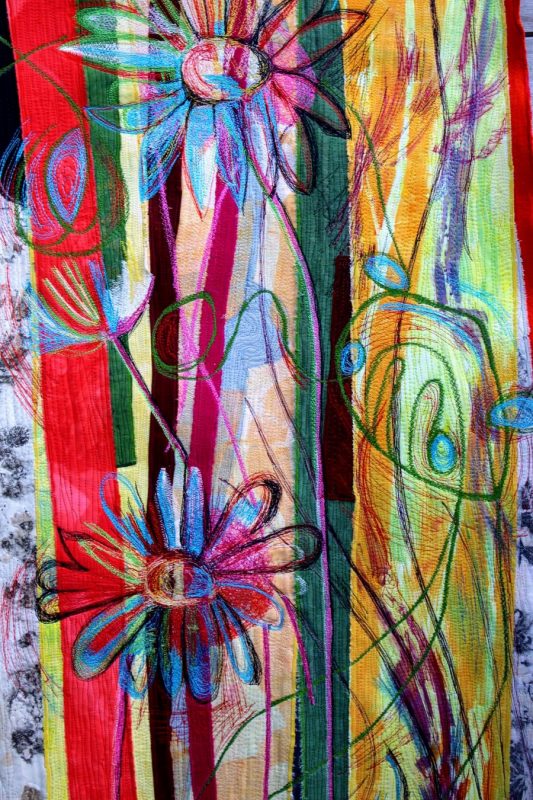
Amanda has largely seen off any ‘Imposter Syndrome’ now that she has been able to develop her own practice and has seen that people respond to her work. However, she is passionate about encouraging other people to learn and enjoy art and textiles, and remains a teacher at heart. She is also now able to confidently describe herself as ‘An artist’. Her story brought her talk back to the original sneer that ‘Those who can’t, teach’ and highlights the much better quote from Aristotle that ‘Those who know, do: Those who understand, teach’.
